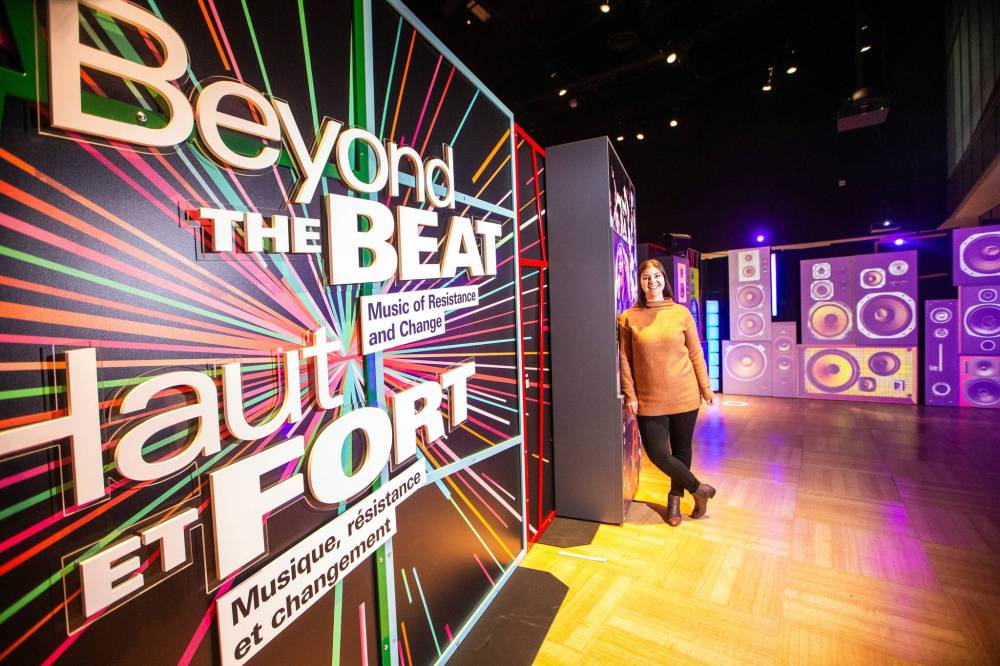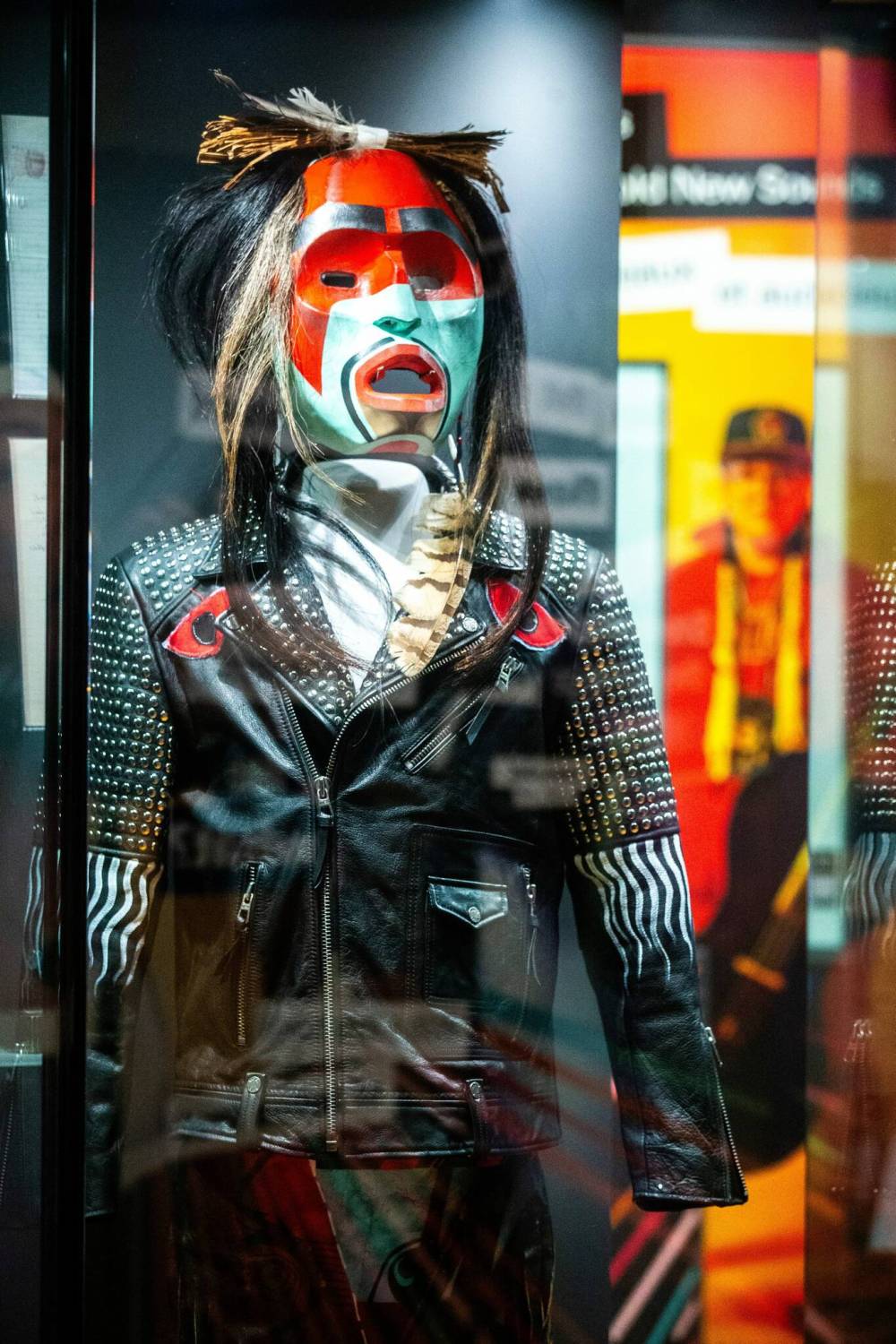Soundtracks of change Exhibition explores music’s role in social and political movements from 1950s to today
Read this article for free:
or
Already have an account? Log in here »
To continue reading, please subscribe:
Monthly Digital Subscription
$0 for the first 4 weeks*
- Enjoy unlimited reading on winnipegfreepress.com
- Read the E-Edition, our digital replica newspaper
- Access News Break, our award-winning app
- Play interactive puzzles
*No charge for 4 weeks then price increases to the regular rate of $19.00 plus GST every four weeks. Offer available to new and qualified returning subscribers only. Cancel any time.
Monthly Digital Subscription
$4.75/week*
- Enjoy unlimited reading on winnipegfreepress.com
- Read the E-Edition, our digital replica newspaper
- Access News Break, our award-winning app
- Play interactive puzzles
*Billed as $19 plus GST every four weeks. Cancel any time.
To continue reading, please subscribe:
Add Free Press access to your Brandon Sun subscription for only an additional
$1 for the first 4 weeks*
*Your next subscription payment will increase by $1.00 and you will be charged $16.99 plus GST for four weeks. After four weeks, your payment will increase to $23.99 plus GST every four weeks.
Read unlimited articles for free today:
or
Already have an account? Log in here »
Hey there, time traveller!
This article was published 01/02/2024 (686 days ago), so information in it may no longer be current.
Every social justice movement has had a soundtrack.
Music has been a part of everything from the American civil rights movement to Black Lives Matter. Black musicians have protested police brutality and racial discrimination. Indigenous artists have raised their voices in resurgence and resistance. The punk rockers of the 1970s raged against economic disparity, while the Riot Grrrls of the early 1990s called for “revolution girl style now!”
As the late Nina Simone, who became the voice of the U.S. civil rights movement with her anthem Mississippi Goddam, once said, “An artist’s duty, as far as I’m concerned, is to reflect the times. How can you be an artist and not reflect the times?”
MIKAELA MACKENZIE / WINNIPEG FREE PRESS Lead curator Julia Peristerakis says Beyond the Beat: Music of Resistance and Change at the Canadian Museum for Human Rights explores the role of music in social transformation and political change. 
Beyond the Beat: Music of Resistance and Change, a new exhibition opening Friday in the Level 1 Gallery at the Canadian Museum for Human Rights, highlights the artists who knew that was their duty, and explores how music has been a vehicle for social and political change from the 1950s to today.
“We’re looking across genres,” says Julia Peristerakis, the exhibition’s lead curator. “We’ve got labour songs and punk rock to contemporary Indigenous musicians, we’re looking at hip-hop. We’re just looking at the different ways popular music has really been used for advocacy.”
Exhibition preview
Beyond the Beat: Music of Resistance and Change
● Level 1 Gallery, Canadian Museum for Human Rights
● To Sept. 29
● Included with general admission (free to $18)
Beyond the Beat is composed of several thematic sections highlighting different movements. Voice of the People looks at folk music and labour rights, as well as the rise of punk rock. We Shall Overcome focuses on anthems for racial justice and equality. Resurgence, developed in partnership with an Indigenous Music Advisory Committee, highlights Indigenous resistance and excellence in music. Rise Up! is all about empowerment and the role of music in women’s and LGBTTQ+ rights. Music Goes Green focuses on environment and climate change, while Can’t Stop the Rock is about musical censorship.
The exhibition features artifacts sourced from the Museum of Pop Culture in Seattle, the Rock & Roll Hall of Fame in Cleveland and the National Music Centre in Calgary, among other places, as well as from several artists directly.
But Beyond the Beat isn’t just an opportunity to see Joni Mitchell’s scrawled lyrics for Big Yellow Taxi, a jacket worn by Public Enemy’s Chuck D, or a copy of k.d. lang’s iconic Vanity Fair cover (if you know you know) in the flesh. Interactivity is also a big part of the exhibition.
MIKAELA MACKENZIE / WINNIPEG FREE PRESS The Northwest Coast mask and leather jacket worn by Snotty Nose Rez Kids' Darren Metz at the 2022 Juno Awards.
Visitors will receive a RFID disc that looks like a record. It’s enabled with a tappable chip — to be used in the same way you would tap your credit card to pay for a purchase — that can activate music, performance footage, interview clips and other media related to the exhibition’s themes.
It’s powerful to, say, read about Black Lives Matter while actually hearing Janelle Monae sing Say Her Name.
“Artifacts can be a bit static. It’s exciting that they’re connected to artists we love and know, but this is a way to make them more dynamic, and maybe make more of a connection between the music and the artifacts,” Peristerakis says.
There’s another interactive element that will have visitors doing the YMCA. While one’s mind might not automatically go to disco when thinking about genres known for advocating for social justice, “dance floors were a space for celebration and joy in the face of violence and homophobia,” Peristerakis points out.
The dance floor in the exhibition focuses on the Village People’s landmark 1979 performance on American Bandstand.
“This was a broader acceptance of queer culture and it was a really groundbreaking moment in pop culture,” Peristerakis says. “And the idea is, the more you dance, more of the video is revealed. We want people dancing, moving their bodies kind of enjoying experiencing that joy and that celebration that those spaces offer.”
MIKAELA MACKENZIE / WINNIPEG FREE PRESS Peristerakis demonstrates RFID interactive features that are part of the exhibition’s multi-genre approach that examines the different ways popular music has been used for advocacy.
Beyond the Beat also encourages musical discovery. Resurgence, for example, features an interactive component in which visitors will be able to hear the breadth of Indigenous, Métis and Inuit artists making groundbreaking, genre-bending music.
Each section tells uniquely Canadian stories, such as the fight for Flow FM, Canada’s first Black-owned radio station, in Toronto.
“We really wanted to elevate Canadian artists and Canadian stories and Canadian human rights issues,” Peristerakis says.
The exhibition, which has been developed so it can tour following its run at the CMHR, features a concert venue, in which visitors can watch an original short film about contemporary Canadian musicians and human rights, as well as a gig poster-making interactive.
Beyond the Beat shows that the spirit of the protest song doesn’t belong to a single genre or decade.
“We’re really kind of pulling that thread and saying, What does it look like today? In some instances, it looks like musicians pushing back against the music industry for not being inclusive. It looks like artists pushing boundaries, being role models, starting new conversations, sharing new ideas,” Peristerakis says.
“We really try to capture all those different ways that meaning is made through music.”
Beyond the Beat is on until Sept. 29.
jen.zoratti@winnipegfreepress.com

Jen Zoratti is a columnist and feature writer working in the Arts & Life department, as well as the author of the weekly newsletter NEXT. A National Newspaper Award finalist for arts and entertainment writing, Jen is a graduate of the Creative Communications program at RRC Polytech and was a music writer before joining the Free Press in 2013. Read more about Jen.
Every piece of reporting Jen produces is reviewed by an editing team before it is posted online or published in print – part of the Free Press‘s tradition, since 1872, of producing reliable independent journalism. Read more about Free Press’s history and mandate, and learn how our newsroom operates.
Our newsroom depends on a growing audience of readers to power our journalism. If you are not a paid reader, please consider becoming a subscriber.
Our newsroom depends on its audience of readers to power our journalism. Thank you for your support.
